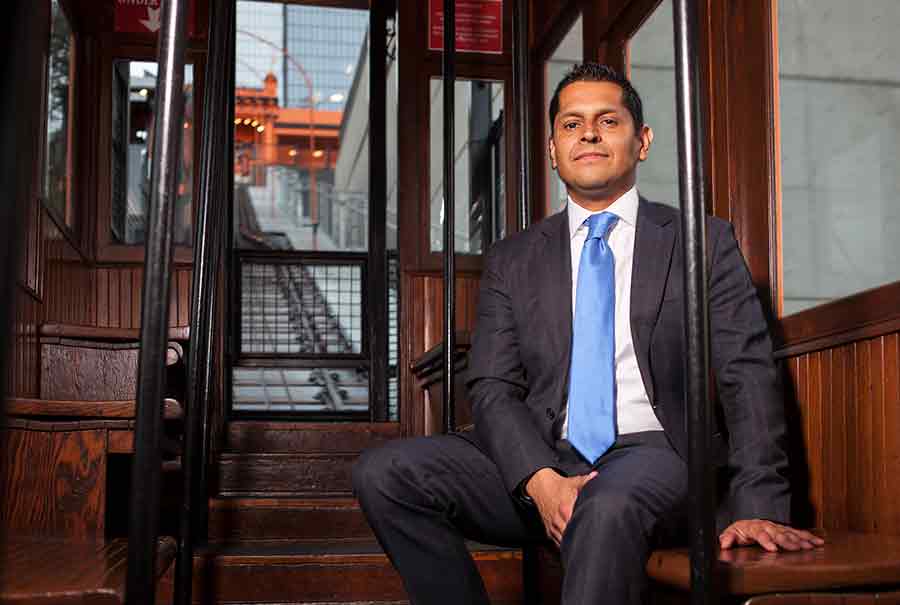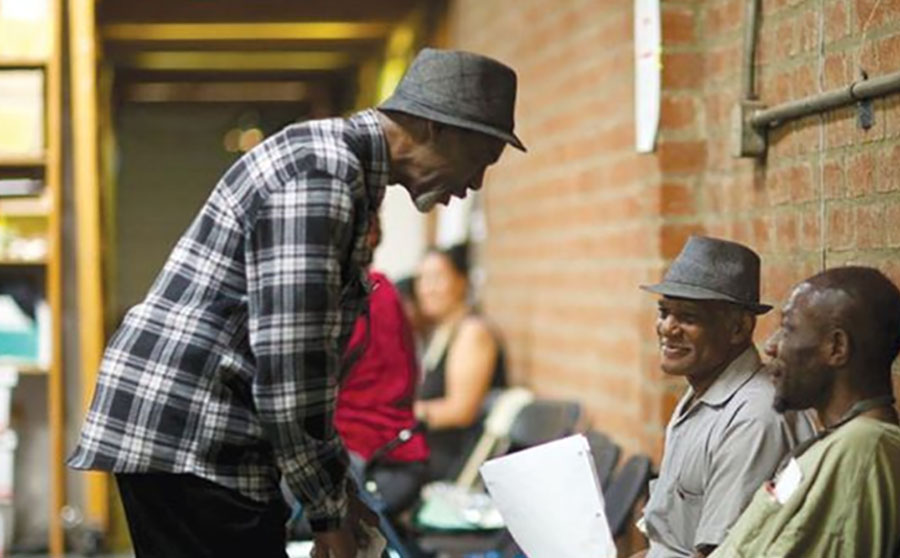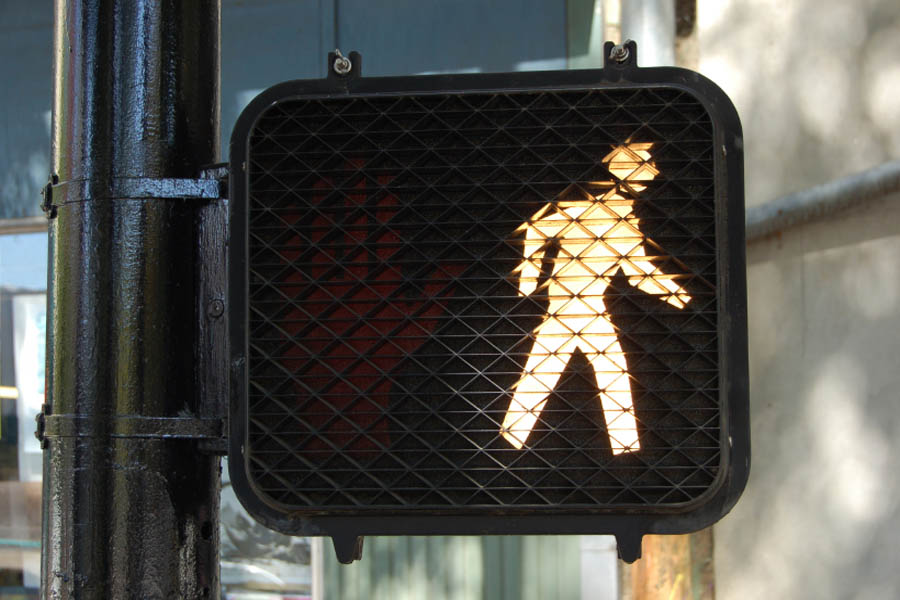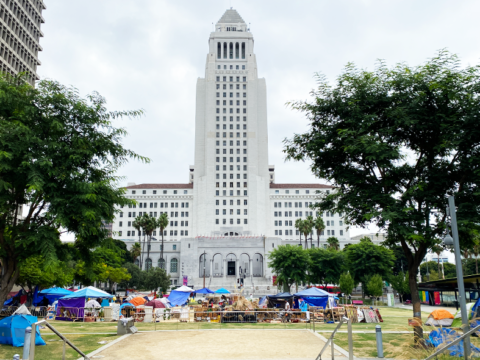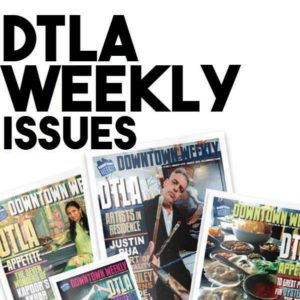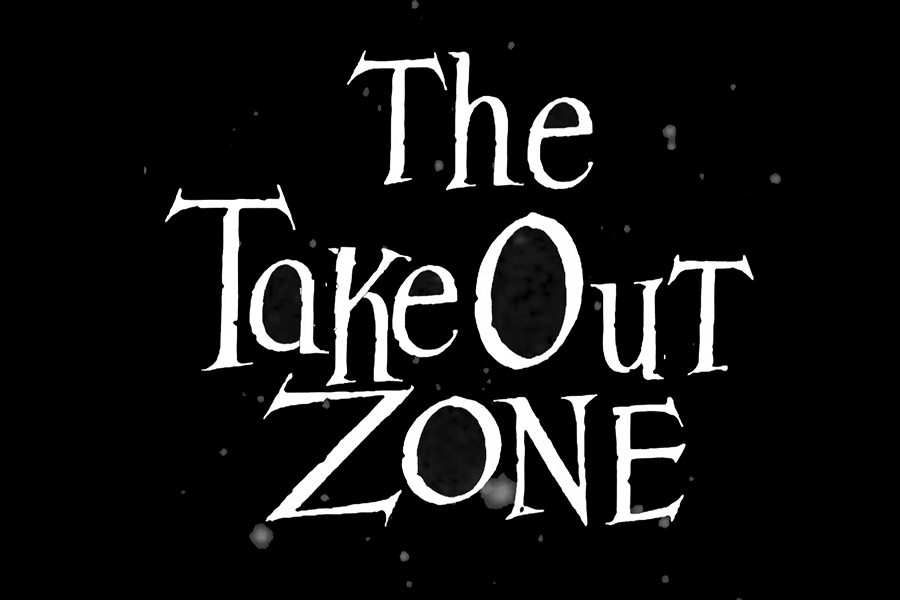
The promise of a new Downtown has been a thriving force behind more than a few new investments and prized developments as hundreds prepare for what can easily be likened to a bright Christmas morning with all of Downtown anxiously awaiting to find out what they can unwrap and just who will get to enjoy their gifts for years to come.
What’s in the big gift box? Why, it’s a downtown developers dream, a whole new city skyline. What about that flat gift box? Is it a choo-choo train? Yes, but we like to call it the Regional Connector, easily enjoyed by multiple players. How about that big pretty gift box with the big pretty bow? Could it be a whole new Fashion District? South Park is coming along nicely. And what about that heavy box, the one marked “fragile”, what’s in it? Beer mugs? Surely, the hipsters will love those. But what about that oddly shaped gift box, the one leaning to the side surrounded by flies and oozing out goo? You guessed it. It’s Skid Row…but who will enjoy that?
While each gift may have its designated gift card this odd box comes with a few more. Virtually surrounded by the reality of its neighboring regions and their ever rising market rates, Skid Row may be the only thing that stands between our city’s worse nightmare and a fully revitalized Downtown Los Angeles over the course of the next 10 years. As of now, Skid Row belongs to non-profits, gangs, drug lords, recovering addicts, low income tenants, mentally ill, dozens of police and thousands of homeless, and according to recent reports, their numbers are growing.
Regardless of how many new inhabitants and planned micro lofts can be packed into Skid Row there are a group of stakeholders determined to see Skid Row, first, become the revitalized “recovery community” it was meant to be. To these people there is far more value in the area than the promise of a booming real estate market. With each new idea for development comes an older idea of how the current locals will remain the benefactors of the much long awaited promises of affordable housing, aesthetics and better stability when it comes to adept social services.
Enter Robert “The Bob” Newman. 7 year downtown resident and social service supervisor by trade, Newman has spent most of his time Downtown working in Skid Row and local government with efforts on revitalizing it for the past 6 years.
Popular around town, Bob has the pleasure of working with a lot of people cultivating relationships with hopes to benefit the stakeholders of downtown Los Angeles, from the Skid Row resident to the millionaire developer.
“Regardless of where a person is at we are all human beings, all God’s children and we all deserve the basic needs and surely deserve respect.”
Sure, plenty of people say they are compassionate and share their visions for change but few have the passion and expertise it takes to stick it out while implementing a solid plan.
Growing up with liberal parents in San Francisco in the early 70s, Bob says he’s always been one to stick up for the underdog. As a child he hung out on the urban side of the tracks, in a time when helping the underdog wasn’t always congruent with the rest of societies beliefs. To this, Bob tells an interesting story of fate and serendipity.
A cordial child Bob was befriended by a neighboring citizen who made sure to inquire about his condition each and every time they crossed paths. A very poised African American woman who’safro stood high and who at often times nourished her own passions when it came to speaking out against social inequality.
One day after Bob’s father began noticing his son’s flowering relationship with the woman, Bob was called into the den and asked by his dad what if anything he knew about her. With the innocuous answers of a child, Bob told his dad the lady was nice, looked after him, and always complimented him for being a well-behaved, “down to earth” little kid. Shortly after the conversation Bob’s dad revealed to Bob the cover of the 1970s Life Magazine with a photo of the woman he had befriended. The caption read, “Angela Davis – the Making of a Fugitive”.
Rather than not allow Bob to continue his friendship with his then controversial friend, Bob’s dad told him nonchalantly that he should read the article and left it up to Bob to draw his own conclusions about continuing their friendship.
As time went by Bob grew into young adulthood practicing jazz and funk on his saxophone. Influenced heavily by John Coltrane, he later joined bands with similar horn sections of those as the Commodores, Tower of Power and Earth, Wind and Fire. His first band was called the “New Genesis”.
Then like most children of affluent parents, his last adolescent summer led him off only to discover one of his scheduled professors
listed as A. Davis, was actually the same A. Davis from his childhood.
A series of jobs leading to his career in social services followed after college. From courier to artist management, Bob got a chance to work with some of America’s most “famous to infamous to famous again” icons including Vanessa Williams, Mariah Carey, and Eric Lynn Wright other wise known as Easy-E from NWA.
Then in 2008, his resume building and almost perfect life came to a crashing halt when Bob faced a series of illnesses that would cause him to lose it all and end up living out of his car for 9 months. It was Skid Row that welcomed him then revealing it’s ugly nature while at the same time offering him humility and the hint of hope, as it does for so many. Bob lived in Skid Row and later secured a job at the Skid Row Housing Trust as he made a full recovery.
For Bob developing and managing affordable housing, healing and getting people off the street didn’t just come from a book. It was his own humbling experiences with life that had allowed him to see the dynamics of life’s realities, those which reminded him of just how easy the shoe could end up on the other foot, and why it’s so imperative not to be so quick to judge others.
“I think I’ve never lost signs of this humility”, says Bob. “We all have the tendency to feel sorry for ourselves. When you think you got it bad somebody out there has it a lot worse.”
No doubt, it was that sense of humility that helped get Bob elected in 2012 as a council member of Downtown Los Angeles Neighborhood Council (DLANC). Today, Bob volunteers inside the public forum keeping an open mind, doing his homework, and looking at the full picture before coming to any conclusions, especially when it comes to making sure people in need of social services, in Skid Row, and throughout downtown are being represented well.
With the underlying wish to see everybody housed, nobody being homeless on the street is a tall order but it’s something Bob still believes is very possible.
“It’s remarkable, you go several miles west and you have some of the richest people in the world. Yet here you can see folks living in cardboard boxes and you know deep down inside it’s not entirely their fault. People complain about the plight of Skid Row and it’s inhabitants but you can’t blame them. When people have no other options as far as bathrooms, waste outlets, housing, where else are they going to go? The missions have their hours and can only handle so much capacity. A larger transitional housing system is needed.”
Bob admits the role of DLANC may be a bit sluggish and that they may even need to “step it up” a bit, but making sure there’s enough services to go around for the entire population is a long process when it comes to asking for help from local government.
“Downtown doesn’t have enough. We can’t always rely on the government or what may take years to come from the Housing Authority or Department of Social Services. It’s everybody’s problem and we must work in conjunction to solve it.
We need things now, not things that are going to be caught up in legislation.” Says Bob.
Frustration. As more and more people from the Skid Row Community step forward to express their frustrations more efforts are being made to limit the past failures of the “cookie cutter approach” into something that can be tailor-made to match each individual, whether it’s regarding mental or physical social services. The true quest, being able to find and appoint the right services for the right condition and then consistently being able to provide those services without contradiction…especially when it comes to housing.
To do this, Bob takes on extra responsibilities inside of DLANC by also manning DLANC’s Planning and Land Use Committee. By doing so he’s privy to information regarding new business, clear sidewalks, clean streets, parks, and anything pretty much related to newly proposed housing projects. Votes from DLANC are influential in the planning process as City Officials and local laws require developers to seek out positive votes from local neighborhood councils in order to gain the ultimate approval by the City of Los Angeles in various stages of their developments.
Of his accomplishments and those projects which have gained his support; the New Carver development on Hope and Venice, the New Pershing on 5th and Main, and the New Genesis, (complete with strange title correlation to the name of his first band). All designed as mixed-use projects which not only provide affordable housing to low-income tenants but also provide social services, if needed, on site.
Another committee Bob chairs is as Coach Government Liaison. As Coach Liaison Bob pays close attention to what’s going on in City Hall and sees himself as a bridge between City Hall, the private developer and the community.
Bob isn’t waiting around, he’s actively making moves and connections believing the private sector is ready to help – but waiting on “a face” to approach them. Sure, they are ready to develop Skid Row, but Bob plans to bring private investors to the point where they can understand what Skid Row needs and help the community develop while it controls its own destiny.
“The same ole’ same ole’ hasn’t worked. We have to set the bar higher, open our minds, and do things a bit differently. Embrace the new changes brought to downtown by the private sector in the form of an alternative option.” Says Bob. “As an analogy, if you have alternatives (yoga, reiki, acupuncture) rather than pills you’ll end up with different choices, and different cures, with less side effects.”
Bob believes in his vision and his works on building the necessary bridges that can help the recovering residents of the community accomplish their goals and bring in all the perks and amenities that other communities have. Bob’s vision of a new Skid Row may be the boost needed to ensure that in the years to come Skid Row will be unwrapped with the same enthusiasm as all the other gifts Downtown has to offer.





